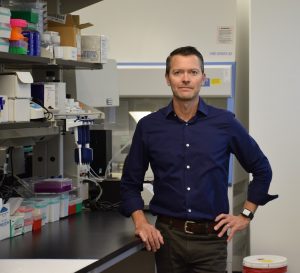
Q: Thom, how did you first get involved with dried blood spots (DBS)?
Thom: I’ve been collecting and analyzing DBS samples for more than 25 years, ever since I realized it was the best way for me to do research on the human immune system in remote, community-based settings. Since DBS sampling requires only a simple prick of the finger, and since the blood is dried and preserved on specially designed paper, it is relatively easy and inexpensive to collect blood samples remotely and ship them to the lab for analysis. DBS sampling has made it possible for me to conduct studies in non-clinical settings in the US, and in remote areas of northern Kenya, lowland Bolivia and Ecuador, and the islands of Samoa.
Doug: My journey with salivary bioscience began with studies on atypical child development, aiming to study biobehavioral processes in natural settings. The minimally invasive nature of saliva sampling was crucial, especially with children who disliked blood draws.
Q: Can you discuss the pros and cons of saliva and DBS?
Thom: Many biomarkers are only accessible through blood, and DBS sampling provides a low cost, minimally-invasive alternative to venipuncture. And since the samples are dried on filter paper, shipping costs, and cold-chain requirements are greatly reduced. However, like saliva, laboratory assays need to be specifically developed and validated for use with DBS samples. Few labs have the expertise needed to optimize assays for DBS or saliva.
Doug: These new DBS methods are surprisingly user-friendly and open up research opportunities for measuring biomarkers not found in saliva. Integrating saliva and DBS seems like the next step for biobehavioral research.
Thom: Exactly, the combination of saliva and DBS provides a lot of exciting research opportunities across a wide range of disciplines.
Q: Thom, how have you helped others in their research with DBS, similar to Doug with saliva?
Thom: I have a lot of colleagues who are interested in collecting DBS samples, but they are having a hard time finding a lab that can do the analyses. Clinical labs work almost exclusively with serum or plasma, and commercial DBS testing focuses primarily on newborn screening and a handful of consumer tests. It has been a challenge for the research community to access infrastructure to support the collection and analysis of DBS samples. To help bridge this gap, I have consulted with many colleagues on protocols for DBS sample collection, shipping, and storage. In my lab we have validated multiple protocols for use with DBS samples and analyzed thousands of samples for my own research, and for projects with collaborators.
Doug: By handling the operational aspects of sample processing, we’ve allowed scientists to focus more on their research rather than logistics. This operational efficiency is like a soccer team where each player focuses on what they do best.
Q: Thom, you’ve joined Salimetrics as a scientific advisor for their DBS initiative. Can you talk about that?
Thom: Demand for DBS analyses has been growing, and my lab has been struggling to keep up. Now that Salimetrics has developed the capacity for DBS testing, the research community will have access to high-quality DBS assay services, and I am very happy to be part of that effort.
Doug: Salimetrics is now ready to consult and provide lab services for studies using DBS. If researchers need measurements not listed on the website, we’re ready to assist.
Q: What opportunities does this convergence create for biobehavioral research?
Thom: This initiative will greatly expand the range of biomarkers available to researchers so they can advance their scientific agendas and conduct innovative, high-impact research.
Doug: In my later academic years, I’m focused on translating our ideas to make a real difference in people’s lives. This initiative encourages us to think beyond basics towards translational research.
Q: What are the practical implications?
Doug: Salimetrics can now support studies of all sizes that want to incorporate DBS, with top experts available for consultation. If researchers need specific measurements not currently available, we’ll do whatever we can to support them.
Thom: I am very excited about the possibilities here. Salimetrics has the experience and mindset to take DBS testing to the next level for the research community.
For any questions or if you want to continue the conversation, feel free to connect with us through the Ask an Expert.
 Contact: Salimetrics (USA)
Contact: Salimetrics (USA)